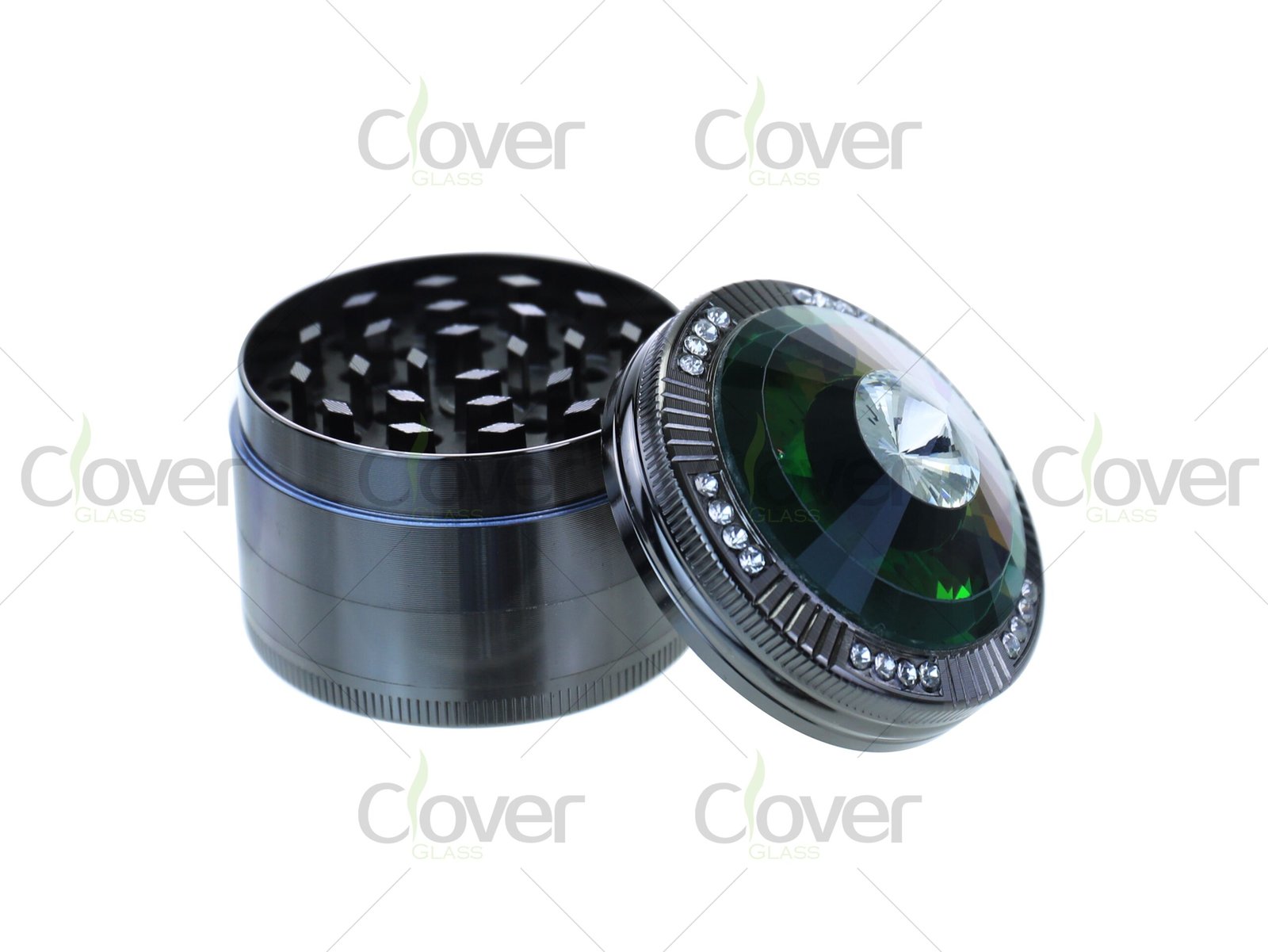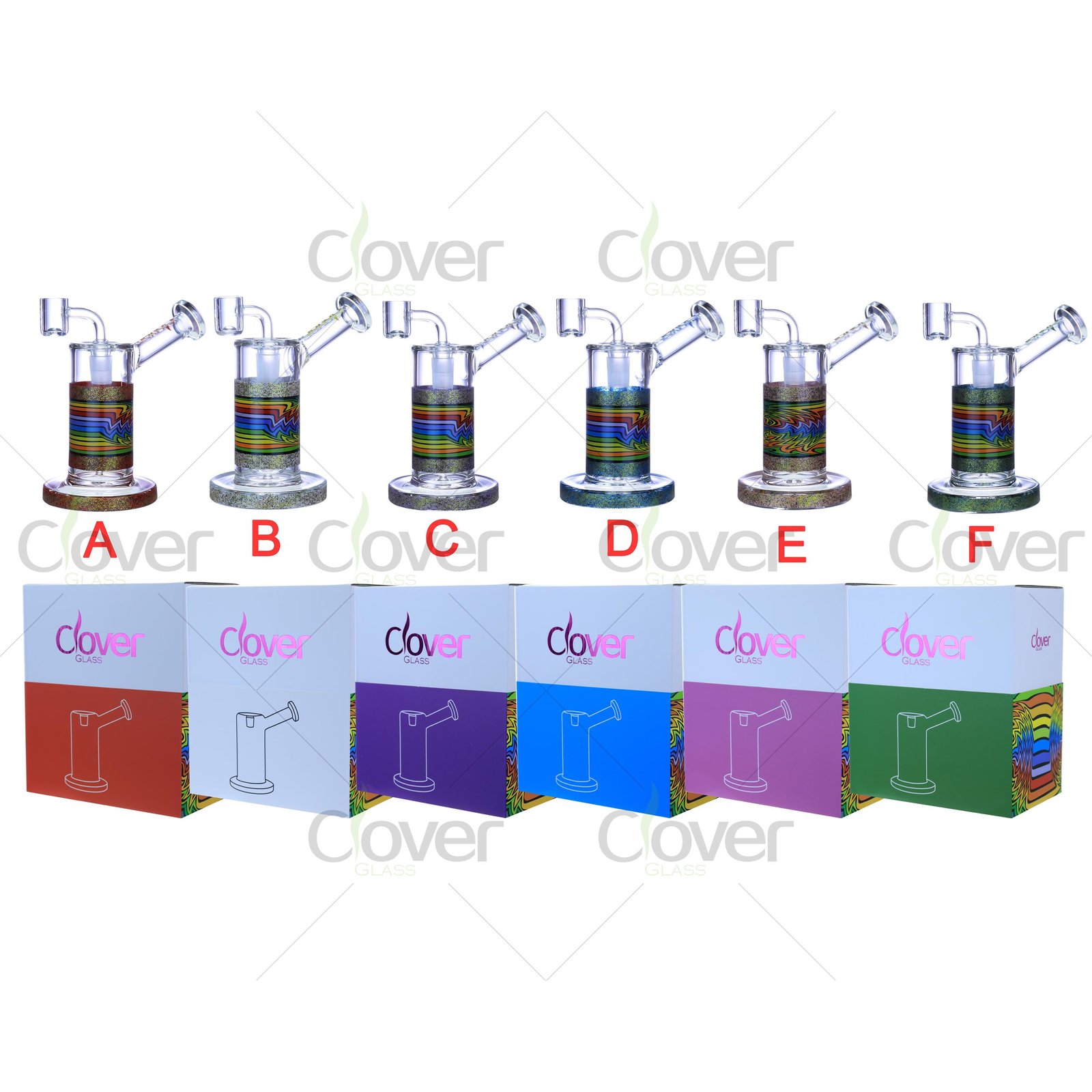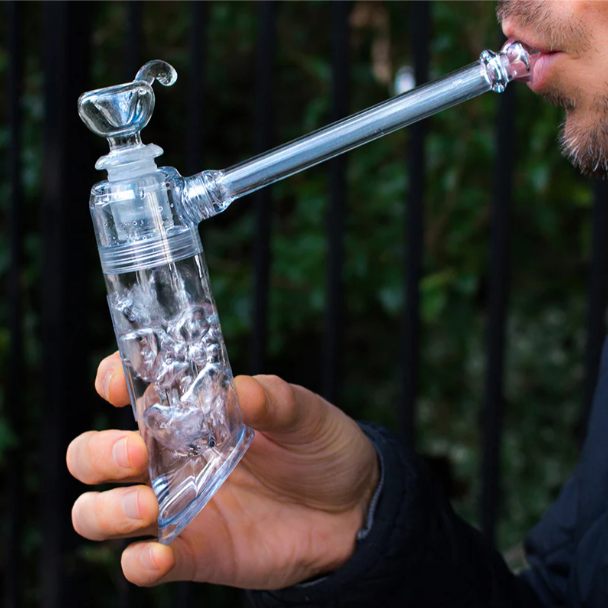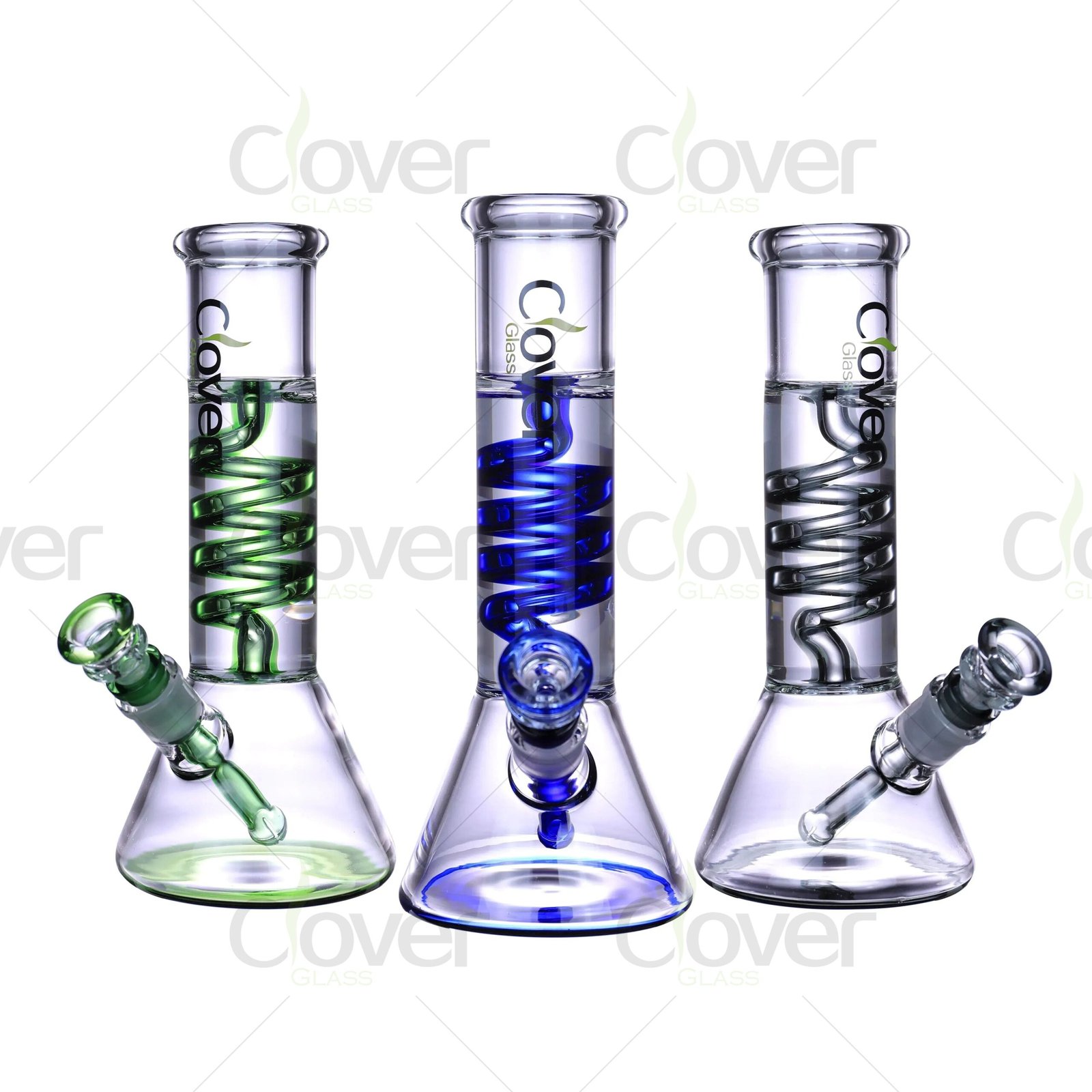I’ve often thought about how a simple tool like a weed grinder can make life so much easier when prepping herbs. It feels like one of those small items that quietly bring a bit of magic to the moment. And honestly, it's not just about fancy designs—it's about practicality, comfort, and that satisfying sense of consistency.
A great weed grinder should feel sturdy in my hands, provide a smooth rotation, and produce a fluffy, even grind that burns nicely. With countless options available—2-piece, 4-piece, electric, or classic—picking the right grinder can be overwhelming. But once you discover a reliable option, you’ll see how it elevates every single session. The more uniform the grind, the more control you have over flavor and potency.
It’s time to explore key features, materials, and maintenance tips for my fellow enthusiasts looking to find the best grinder for their daily ritual.
What Makes a Good Weed Grinder? Key Features to Look For
A dependable weed grinder isn’t just about shredding herbs—it’s about precision, easy maintenance, and a design that suits your hands. From the shape of the teeth to the magnet strength, each component matters.
A good weed grinder should fit your grip comfortably, produce a consistent grind, and allow for quick, hassle-free cleaning. The simpler it is to operate, the more likely you’ll use it regularly. Pay attention to teeth design, kief chambers, overall construction, and how quickly it assembles or disassembles.

When I look at a grinder’s design, I immediately check if it’s built to last. A high-quality metal grinder, for instance, often has sturdier teeth that won’t easily dull over time. Its magnetic lid should stay tight during use, reducing unwanted spills. If there’s a kief catcher, it should be well-fitted to prevent precious pollen from escaping. Plus, consider the number of teeth—enough to shred effectively, but not so many that it clogs. I also prefer grinders with comfortable grips that don’t slip in my hand. Details like this matter because we want reliability and a smooth user experience.
Teeth and Their Importance
Teeth are the key to a uniform grind. Sharper, diamond-shaped teeth often offer the best results, slicing through sticky herbs without a fight. If the teeth are weak or placed too far apart, you might end up with uneven chunks. That means your product may burn erratically.
Magnetic Closure and Kief Catcher
Magnetic lids keep your herb where it belongs, rather than all over the floor. And a kief catcher can be a game-changer if you enjoy collecting that fine, potent dust. It’s like a little bonus surprise for later.
Ease of Use and Maintenance
A grinder should be intuitive to open, close, and clean. Models with fewer nooks and crannies are typically easier to wipe down. It’s also worth noting how the pieces fit together—precision threading can reduce jams and cross-threading.
| Grinder Feature | Why It Matters |
|---|---|
| Teeth Design | Ensures an even, fluffy grind |
| Magnet Strength | Prevents spills and mess |
| Kief Catcher | Collects valuable pollen |
| Threading | Eases assembly and reduces jams |
Types of Weed Grinders: 2-Piece, 4-Piece, Electric, and More
You’ll find various styles of grinders on the market, each one offering a unique approach to grinding. Understanding these types can help narrow down your choice.
2-piece grinders are simple and compact, while 4-piece grinders come with extra chambers for storage and kief collection. Electric models do the hard work for you, ensuring consistency in seconds. Although there’s no universal “best” type, there’s definitely one that fits your personal style and usage needs.

For folks who prefer minimal fuss, a 2-piece grinder can be just right—it’s straightforward: teeth on top, teeth on the bottom, and no extra compartments. But if collecting kief or having a dedicated storage section appeals to you, a 4-piece grinder may be the better bet. There are also 3-piece grinders, which come with a single compartment for storage but lack a separate kief catcher. Electric grinders can be incredibly convenient, especially if you have a lot of product to grind at once. These often run on batteries or plug-in power, using small electric motors to do the heavy lifting. It’s important to note that while they save time, cleaning them can be slightly more involved than with manual grinders.
2-Piece Grinders
A 2-piece is the most basic design. You place your herbs between two plates with teeth, twist, and you’re done. It’s compact, but you won’t have any extra chamber for collecting kief.
4-Piece Grinders
The 4-piece design is a favorite for those who like to gather that precious pollen in a separate chamber. This approach can be super handy for stretching your stash in the long run.
Electric Grinders
Electric grinders are about speed and convenience. They can save your wrists from manual twisting, but they might be noisier, and you’ll need a power source or battery.
Top Materials for Weed Grinders: Aluminum vs. Plastic vs. Wood
Materials can affect durability, weight, and even taste. Aluminum grinders tend to be long-lasting, while plastic ones are lightweight and budget-friendly. Wood grinders look classic, but cleaning them requires more care.
Aluminum grinders are typically known for sturdiness and a reliable grind. Plastic grinders are appealing if you’re on a tight budget or just dabbling. Wood grinders can feel artisanal, but they may not offer as precise a grind as metal options.

I personally lean toward metal grinders because I feel they’re more resistant to wear and tear. Plastic can crack under pressure, though modern designs have improved a lot. If you love the rustic vibe of wood, then a wooden grinder might be your best friend, especially if you value aesthetics. But keep in mind: wood can absorb odors and oils over time if not well-finished or cleaned regularly. Also, some wooden grinders might have fewer, simpler teeth, which means a slightly rougher grind. Ultimately, the choice of material comes down to what you value most—durability, cost, or a natural style.
Why Material Matters
- Durability: Metal grinders often outlast plastic or wood models.
- Maintenance: Plastic may be easier to clean with simple rinsing. Wood might require a bit more careful handling.
- Aesthetics: Wooden grinders have a classic charm, while metal ones look sleek and modern.
Balancing Cost and Quality
If you’re on a budget, plastic can do the trick. Just treat it gently. If you want something that’ll last for years, consider aluminum or a well-made wood grinder.
Best Weed Grinders in 2025: Our Top Picks for Every Budget
I love seeing how technology and design come together to create truly impressive grinders, especially for those of us who want variety at different price points.
Budget-friendly plastic grinders offer a simple, reliable solution if you don’t mind replacing them after heavy use. Mid-range metal grinders strike a balance between cost and performance, often including a handy kief catcher. High-end options showcase premium materials, brand names, and intricate designs that can last for years. Regardless of your wallet size, there’s a grinder that fits your style.
Looking ahead to 2025, I see a trend toward more user-friendly designs—think ergonomic grips, advanced tooth shapes, and easier cleaning systems. Some manufacturers are even adding innovative features like translucent windows and LED lights, so you can see your herbs in action. With a growing market, you might find grinders with lifetime warranty coverage, which reflects a brand’s confidence in its build quality.
Budget Picks
- Basic Plastic Grinder: Simple to use, easy to replace, and perfect if you’re just getting started or trying out different grinding methods.
Mid-Range Favorites
- Aluminum 4-Piece: Generally offers a kief catcher and reliable teeth without a hefty price tag. These are the workhorses of the grinding world.
Premium Choices
- High-End Metals or Unique Materials: These come with sleek finishes, top-grade construction, and sometimes exclusive designs. Great for those who want to invest in a statement piece.
Manual or Electric: Which Weed Grinder is Right for You?
Deciding between manual and electric grinders can be tricky. Manual grinders are typically more affordable and let you control the grind’s coarseness. Electric ones can churn through large amounts of herb in seconds, saving time and effort.
If you appreciate hands-on control and don’t mind a little elbow grease, go for manual. But if convenience matters most—especially during group sessions—an electric grinder might be your best bet. Think about how often you’ll use it and how much herb you usually grind each time.
I’ve noticed that some people love the ritual of twisting a manual grinder—it’s almost meditative. With electric grinders, there’s the perk of quickly pulverizing large batches, ideal if you run a busy schedule or share with friends. Keep in mind, though, that electric models can be a bit bulkier and require consistent cleaning around the blades to prevent buildup. Also, if you choose a battery-powered device, remember to keep spare batteries handy. Ultimately, the choice comes down to personal preference and lifestyle.
Manual Perks
- Control: It’s easier to achieve the exact consistency you want.
- Portability: Most manual grinders are small enough to carry anywhere.
- Less Noise: No motors whirring when you’re trying to be discreet.
Electric Advantages
- Speed: Grind in seconds, perfect for big batches.
- Less Effort: No wrist strain, which can be helpful for medical users.
- Consistency: Many electric models deliver uniform results every time.
How to Clean and Maintain Your Weed Grinder for Long-Term Use
A well-kept grinder can serve you faithfully for years. Regular upkeep ensures a consistent grind, prevents gunk build-up, and helps preserve that fresh aroma.
Cleaning your grinder involves disassembly, gentle brushing, and the occasional deep soak in isopropyl alcohol. Proper maintenance not only keeps it looking good but also extends its lifespan, saving you money in the long run. Make it a habit to give your grinder some TLC every few weeks, especially if you use it daily.
Before I start cleaning, I like to tap out as much residue as possible. Then I disassemble the pieces and brush away any loose bits. For a deeper clean, I soak the parts (except any electronic components, of course) in isopropyl alcohol. This helps dissolve sticky resin and kills lingering bacteria. After soaking, I rinse everything with warm water and let it air-dry. Make sure every piece is completely dry before reassembling to avoid corrosion—particularly important for metal grinders. A quick wipe with a soft cloth keeps it shining. If you have a kief screen, handle it gently to avoid tearing or denting. Regular maintenance does more than just keep your grinder sanitary; it preserves the taste of your herbs too.
Simple Step-by-Step Cleaning Process
- Disassemble: Remove the lid, chambers, and screen if applicable.
- Brush Off Debris: Use a small brush or toothbrush to remove plant particles.
- Soak: If it’s metal or plastic, you can soak parts in isopropyl alcohol.
- Scrub Gently: Work on stubborn areas with a soft-bristle brush.
- Rinse: Use warm water to wash away residue.
- Dry Thoroughly: Let all components air-dry or pat them with a clean towel.
| Maintenance Tip | Benefit |
|---|---|
| Regular Light Cleaning | Prevents heavy buildup |
| Deep Soak Occasionally | Removes sticky resin and kills bacteria |
| Use Soft Brushes | Avoids scratching or damaging the grinder |
| Dry Completely | Prevents rust or corrosion |
Conclusion
Finding the best weed grinder isn’t just a question of brand or price—it’s about discovering a design that feels great in your hand and handles your herbs with ease. When you invest in a sturdy, easy-to-clean grinder, you elevate every step of the process. And remember, if you ever need a reliable bulk option for your store or distribution network, I’m here to help with a range of solutions that emphasize quality and speed. It’s all about making every grind—large or small—a breezy, satisfying part of your day.






